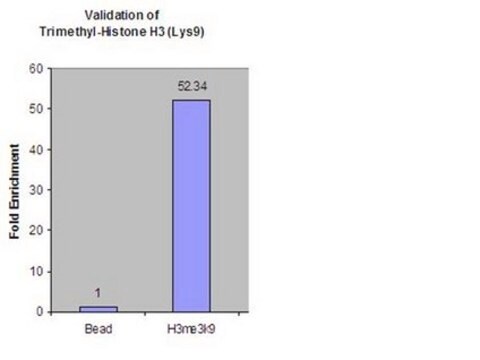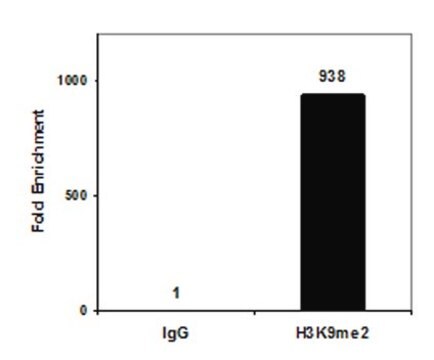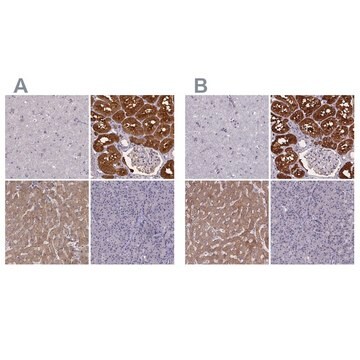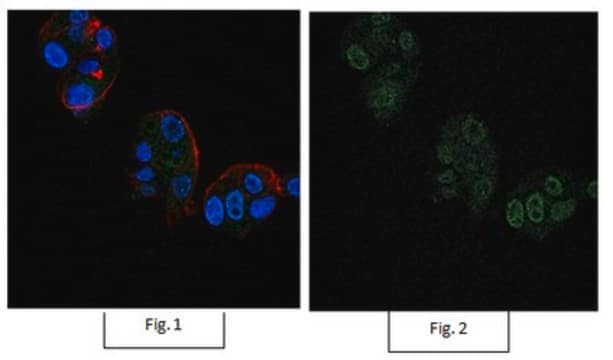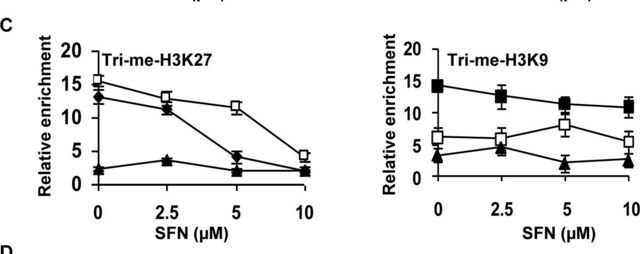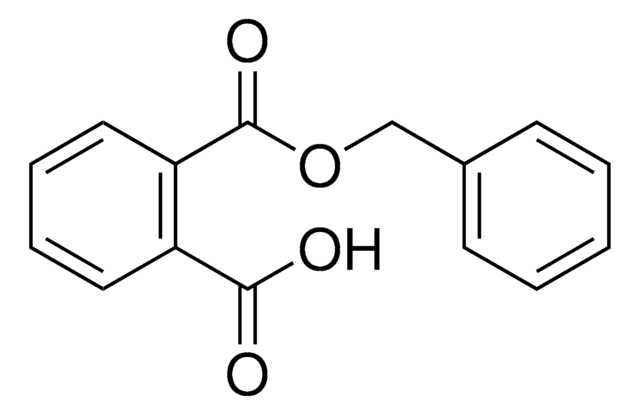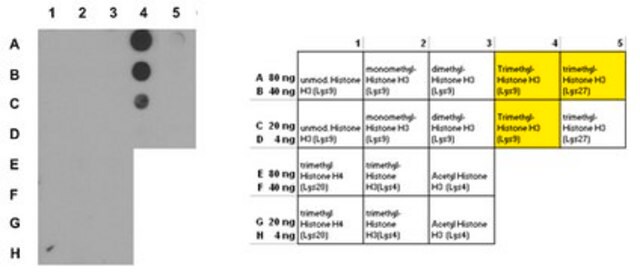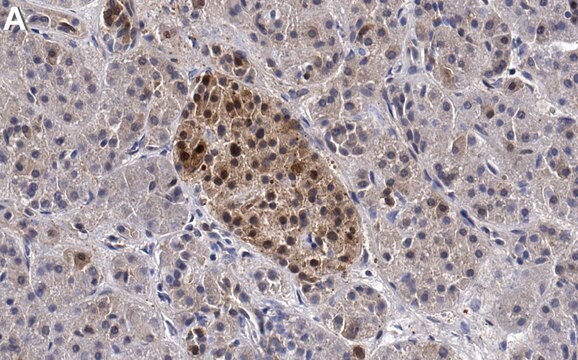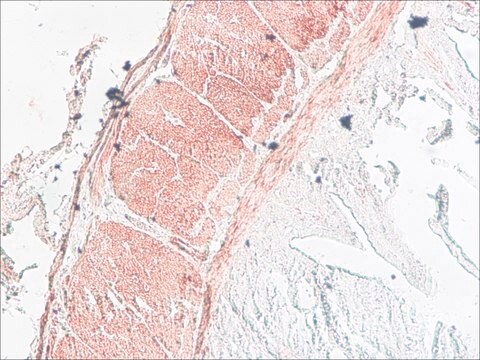05-1242-S
Przeciwciało anty-trimetylo-histonowe H3 (Lys9), klon 6F12-H4, rozmiar próbny
clone 6F12-H4, from mouse
Synonim(y):
H3K9me3, histon H3 (trimethyl K9), rodzina histonów H3, członek T, histon 3, H3, klaster histonów 3, H3
About This Item
Polecane produkty
pochodzenie biologiczne
mouse
Poziom jakości
forma przeciwciała
purified antibody
rodzaj przeciwciała
primary antibodies
klon
6F12-H4, monoclonal
reaktywność gatunkowa
mouse, human
metody
ChIP: suitable (ChIP-seq)
dot blot: suitable
immunofluorescence: suitable
inhibition assay: suitable (peptide)
western blot: suitable
izotyp
IgG1κ
numer dostępu NCBI
numer dostępu UniProt
Warunki transportu
wet ice
docelowa modyfikacja potranslacyjna
trimethylation (Lys9)
informacje o genach
human ... H3C1(8350)
mouse ... H3C1(360198)
Opis ogólny
Specyficzność
Immunogen
Zastosowanie
Reprezentatywne dane z poprzedniej partii. Sonikowaną chromatynę 3T3 L1 poddano immunoprecypitacji chromatyny przy użyciu anty-trimetylo-histonu H3 (Lys9) i zestawu Magna ChIP G (nr kat. 17-611). Pomyślna immunoprecypitacja fragmentów DNA związanych z trimetylohistonem H3 (Lys9) została zweryfikowana przez qPCR przy użyciu starterów flankujących promotor p16.
Analiza inhibicji peptydowej:
Test blokowania peptydów wykazuje wyraźną preferencję przeciwciała dla formy trimetylowej w porównaniu z formą dimetylową.
Immunoprecypitacja chromatyny (ChIP):
Analiza ChIP znanych chromosomalnych celów Suv39h (H3K9me3 w głównych satelitach, komórki MouseES).
Analiza Dot Blot:
Analiza dot-blot wykazująca swoistość anty-H3K9me3, klon 6F12-H4 dla trimetylo-Lys9 histonu H3.
Epigenetyka i funkcje jądrowe
Histony
Jakość
Western Blot Analysis: A 0.5 – 5 μg dilution of this lot detected trimethyl histone H3 (Lys9) in HeLa acid extracts.
Opis wartości docelowych
Postać fizyczna
Przechowywanie i stabilność
Aby uzyskać maksymalny odzysk produktu, należy odwirować fiolkę przed zdjęciem korka. Unikać zamrażania, które może uszkodzić IgG i wpłynąć na działanie produktu.
Komentarz do analizy
Ekstrakt kwasu HeLa
Oświadczenie o zrzeczeniu się odpowiedzialności
Nie możesz znaleźć właściwego produktu?
Wypróbuj nasz Narzędzie selektora produktów.
Kod klasy składowania
12 - Non Combustible Liquids
Klasa zagrożenia wodnego (WGK)
WGK 1
Temperatura zapłonu (°F)
Not applicable
Temperatura zapłonu (°C)
Not applicable
Certyfikaty analizy (CoA)
Poszukaj Certyfikaty analizy (CoA), wpisując numer partii/serii produktów. Numery serii i partii można znaleźć na etykiecie produktu po słowach „seria” lub „partia”.
Masz już ten produkt?
Dokumenty związane z niedawno zakupionymi produktami zostały zamieszczone w Bibliotece dokumentów.
Nasz zespół naukowców ma doświadczenie we wszystkich obszarach badań, w tym w naukach przyrodniczych, materiałoznawstwie, syntezie chemicznej, chromatografii, analityce i wielu innych dziedzinach.
Skontaktuj się z zespołem ds. pomocy technicznej